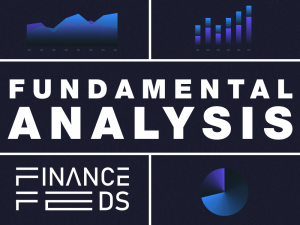Sumsub publishes KYC guide for licensed and non-licensed brokers
Exness, INGOT Brokers, and Xena Exchange are a few of the many Sumsub customers who achieved 97% hit rates and two-minute median onboarding time. The guide shares their real-life cases and practical steps on building user verification levels for effective onboarding.

Sumsub has published a Know-Your-Customer (KYC) guide to help trading platforms stay compliant, increase pass rates and fight fraud effectively.
The UK-based identity verification software provider uses methodology that follows FATF recommendations, the international standard for AML/CTF rules and local regulatory requirements (FINMA, FCA, CySEC, MAS).
The “KYC guide for trading industry: balancing compliance and pass rates” offers actionable solutions for three main challenges facing trading companies today:
- compliance with KYC/AML regulations;
- building the onboarding process to quickly verify users and reduce drop-offs;
- maintaining a high level of fraud protection.
Regulatory specifics for trading platforms across the globe
Trading companies are particularly vulnerable to money laundering and terrorist financing, fraud, and regulatory fines. Compliance with local KYC/AML requirements is critical in order to tackle such vulnerabilities.
The guide dives into the regulatory specifics for trading platforms across different regions and countries, describing two different approaches to compliance for licensed and non-licensed brokers.
Sumsub’s guide also helps trading platforms learn how to build effective verification flows particularly in jurisdictions that require them to perform multiple user checks. This way they can ensure high pass rates.
Exness, INGOT Brokers, and Xena Exchange are a few of the many Sumsub customers who achieved 97% hit rates and two-minute median onboarding time. The guide shares their real-life cases and practical steps on building user verification levels for effective onboarding.
Sumsub’s KYC solution verifies users in less than 50 seconds on average and achieves high conversion rates (91.64% in the US, 95.86% in the UK, and 90.98% in Brazil).
GPS-based proof of address vs IP-based geolocation
Sumsub has recently added GPS-based verification to its Proof of Address solution, which helps businesses stay compliant and fight digital fraud.
Aimed at the fintech market, where companies are often obliged to verify user residence, the GPS-based feature allows companies to verify addresses as quickly and conveniently as possible.
The firm argues that standard proof of address (PoA) verification can be problematic because PoA is confirmed by submitting documents such as bank statements, utility bills, voter registration, mobile operator bills….and some of these documents have no security marking or photos, making them prime targets for forgery.
Additionally, Sumsub states that many of these documents are non-standardized and may require additional checks, which leads to longer onboarding time and, consequently, lower pass rates.
Given that regulators in the crypto and trading sectors demand that businesses confirm user addresses for the sake of AML efforts, Sumsub has found a way to ensure companies keep user conversion high while staying fully compliant with regulations.
Why GPS-based? Because IP-based geolocation may not be enough for compliance purposes. The new feature lets Sumsub customers perform PoA checks instantly, while keeping the option for document-based verification open.









